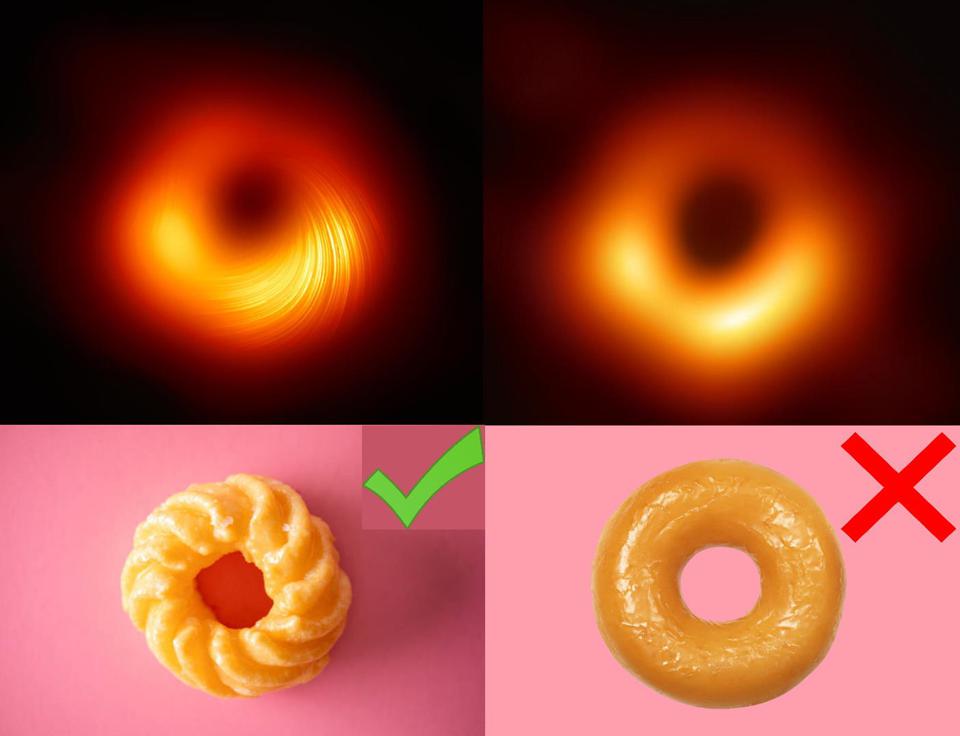
 Credit: EHT Collaboration (top); Getty Creative (Bottom); E. Siegel
Credit: EHT Collaboration (top); Getty Creative (Bottom); E. Siegel
Dunkin'
When it comes to black holes, what goes in does not come out (we think). Black holes grow by accretion of material around them, gaining more and more mass as they swallow more and more matter. We think this matter does not fall straight in; rather, it swirls around the black hole as it spirals down through the black hole's event horizon, much like water flowing down a drain. This process was imaged for the first time by the Event Horizon Telescope, a massive scientific collaboration which was able to detect the shadow of the black hole at the center of the galaxy M87, a shadow surrounded by a donut-shaped ring of matter glowing in radio waves. The EHT however did not just image the black hole's shadow; it also measured the polarization of the radio emission. Polarization of an electromagnetic wave like light or the radio waves observed by EHT is a measure of the tilt of the plane of oscillation of the electomagnetic wave. The image above shows, at the top right, the now-famous image of the shadow of M87's black hole at the center of the glowing ring of radio emission seen by the EHT. At the upper left is an enhanced black hole image derived after careful analysis by the EHT team of the polarization of the radio waves from the matter surrounding M87's black hole. The polarization analysis traces out the curved lines shown in the image, which follow the inferred direction of the magnetic field threading through the glowing matter near the black hole: a cruller more than a donut, as others have noted. These measurements help to provide an estimate of the strength of the magnetic field near the black hole, showing that it's surprisingly weak, only about 30 times the strength of the earth's magnetic field, or less. The analysis may also help to explain the magnetic origins of the enormous jet escaping from the black hole.
Published: April 5, 2021
<
HEA Dictionary ● Archive
● Search HEAPOW
● Other Languages
● HEAPOW on Facebook
● Download all Images
● Education ● HEAD
>

Each week the HEASARC
brings you new, exciting and beautiful images from X-ray and Gamma ray
astronomy. Check back each week and be sure to check out the HEAPOW archive!
Page Author: Dr. Michael F. Corcoran
Last modified Monday, 26-Feb-2024 17:21:11 EST


